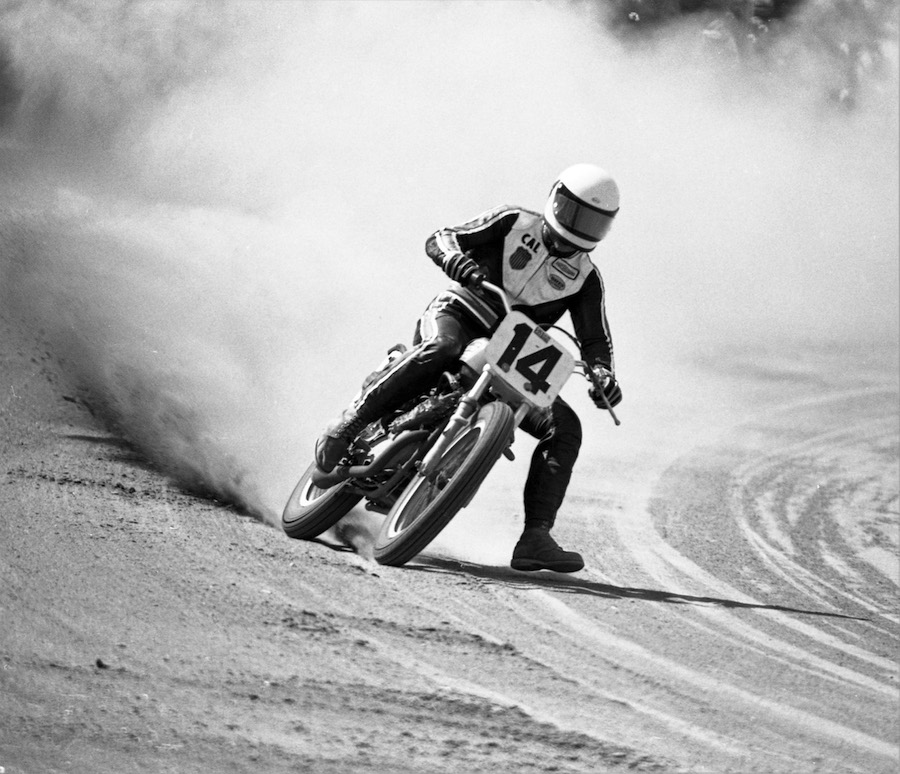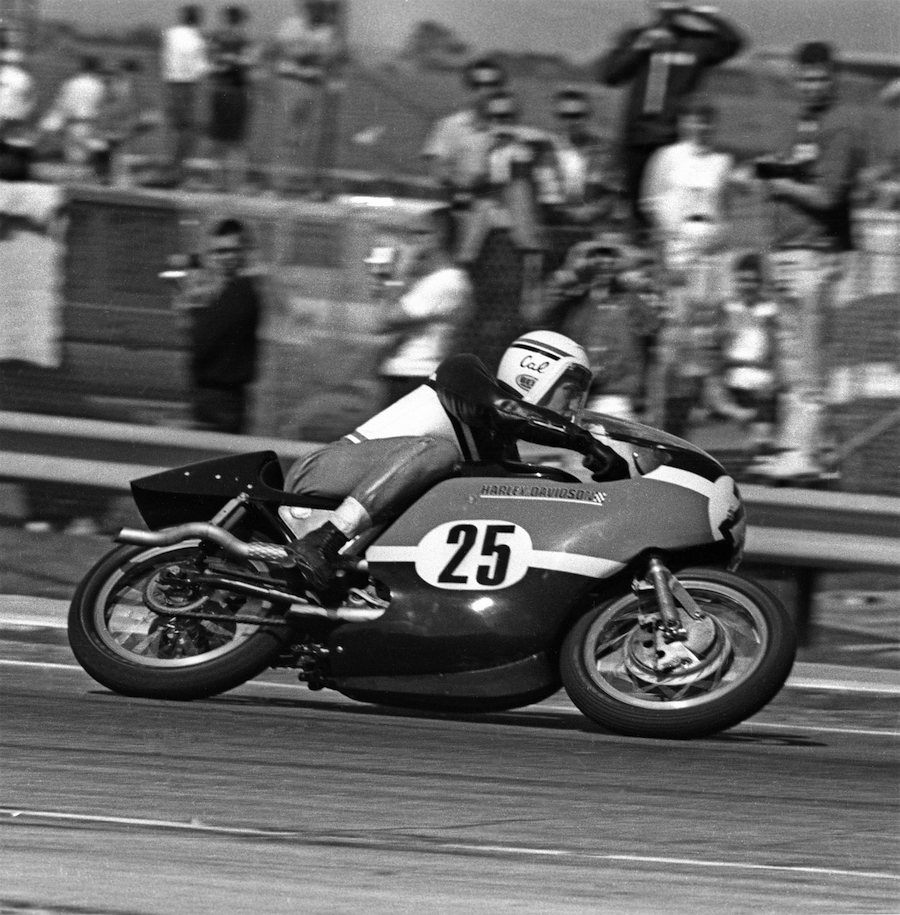Born in San Diego in 1940, Cal Rayborn first rode a motorcycle when he was eight. In his teens he worked as a delivery boy after school and over the summer holidays, riding of course.
Cal turned to scrambles and TT Steeplechase in the early 1960s and tried road racing, beating many top Californians aboard his production machine. He turned pro in 1965, recording two podium finishes – a second at the Des Moines road race in Iowa and third at LA’s half-mile Ascot Park. He won his first AMA road race at Carlsbad near San Diego in 1966.
Legendary Harley-Davidson race boss Dick O’Brien recognised Rayborn’s raw speed and signed him. Although he was contracted to ride Harley 750 dirt-trackers and road racers, O’Brien allowed him to compete in the 250 and 350 classes on both Kawasaki and Yamaha two-strokes, racing against the likes of Kel Carruthers in the AMA Junior class. Cal rode those Yamahas for good friend and mentor Don Vesco.
Vesco noted Rayborn’s rare talent for corner entry, now the staple technique for elite riders up to and including Marc Márquez.
“Those Harleys were heavy and didn’t have the greatest brakes,” Vesco remembers. “Calvin would run the thing into the turns faster than anyone else, then he’d turn in the front tyre to scrub off speed. That’s not all that uncommon now, but in those days no one rode that way.”
Rayborn’s first big win for H-D came at the 1968 Daytona 200. He towelled up reigning world champion Phil Read, out-braking the British rider’s much lighter Yamaha TD3 into the Horseshoe. Then he backed it up with victory in the 1969 event.
In 1970, Rayborn piloted a Harley-Davidson Sportster-based streamliner to a new American and International speed record of 265.492mph (427.268km/h) at Bonneville.
He recorded his only-ever AMA national dirt-track win at the Livonia Mile in Michigan in 1971.
In 1972, Rayborn made a dynamic debut in the UK, winning three of the six races in the John Player Transatlantic Series held over Easter. Local Ray Pickrell (Triumph 750) won the other three, the pair finishing 1-2 in all six legs. It was England’s first viewing of a top American rider, and local fans voted Cal ‘Man of the Series’.

Later that year Rayborn won the road races at Indianapolis and Laguna Seca, which were his last AMA victories.
Rayborn’s UK success motivated him to take on the best road racer of 1972, Jarno Saarinen, at the Race of the Year at Mallory Park in September. Cal knew after practice that his heavy Harley was no match for Saarinen’s new water-cooled Yamaha 350, but he stayed with the Finn in the opening laps of the race, skidding into the corners as usual until ignition failure forced him out.
When Rayborn learned that Giacomo Agostini had signed with Yamaha and would contest the 1974 Daytona 200 on the new TZ750A, the American said, “Boy, I better get me a quick bike for that one!” Days before flying to New Zealand in late December 1973, Rayborn signed with Suzuki to partner Paul Smart on a TR750 for the 1974 season.
Aged 33, Rayborn had also turned his talents to four wheels. He had bought a Lola Formula 5000 open-wheeler that he entered in the 1974 Tasman Series. (Mike Hailwood had contested the 1972 series, finishing a fine second overall in a Surtees.)
The first round of the ’74 Tasman at Levin north of Auckland was set down for January 6, a week after the second round of the inaugural Marlboro bike series at Pukekohe. Rayborn arrived in NZ and was offered $1000 start money to race a three-year-old Suzuki TR500. It had reportedly been converted to alcohol and problems tuning the engine provided Cal with only six practice laps. Those problems were never resolved.
Running fourth in the race, Rayborn’s Suzuki seized at the start of lap two, sending him into a wooden fence at about 190km/h. With so much still to do in his life, Calvin Lee Rayborn II was fatally injured.

the 1968 Daytona 200
Rayborn’s passing followed the 1973 deaths of Saarinen, Geoff Perry, Renzo Pasolini and Kim Newcombe. It was all too much for fellow San Diegan and 1972 Daytona winner Don Emde.
“I knew Cal and Jarno, and I was a Suzuki teammate to Geoff at Daytona in 1973,” Emde said. “That TR750 was easily the scariest bike I ever rode. After my experiences on the Suzuki at Daytona then all the bad stuff in 1973 topped off by Cal getting killed, it made me decide to hang the helmet up.”
For Kenny Roberts, Rayborn was both a tutor and a rival.
“Something I learned was that Cal Rayborn always set his bike up to push the front end in low-speed corners and slide the back tyre on high-speed corners,” Roberts said in 1978. “That’s basically what I do.
“Cal was probably the most aggressive rider I’ve ridden with. If Calvin were still alive, there’d be some real battles between him and me. He was the type of guy who wouldn’t give an inch; I don’t give an inch either.”

By Darryl Flack











